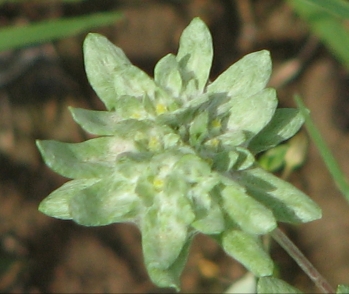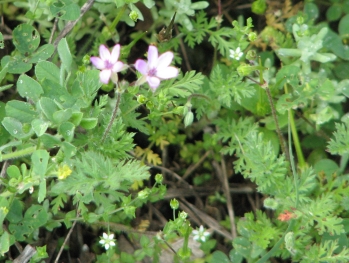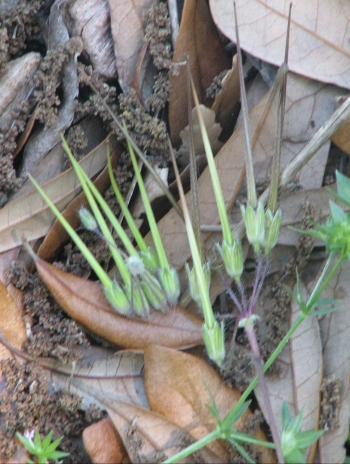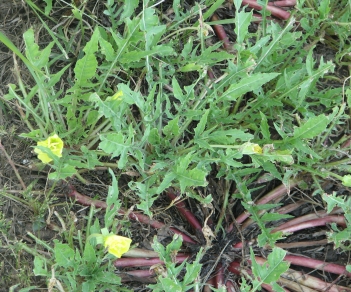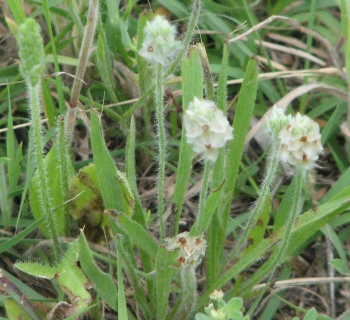Threadleaf (Bishop’s weed) Ptilimnium capillaceum. A short (10-12”), fibrous plant that derives its name from its thread-like, compound pinnate leaves which divide into many threads per petiole, this annual blooms early, before it gets crowded out by taller vegetation. The leaves clasp the slightly ribbed stems, the petioles wrapping them in a transparent sheath. The weakly upright stems would sprawl if not supported by surrounding vegetation. The flowers head are composed of tiny white flowers, born in a compound umbel, much like Hedge Parsley, each flower composed of 5 spatula shaped petals arranged around a yellow center. Flowers convert to smooth, elongated seeds with slight “winglike” projections. The plant differs from Hedge Parsley (Torilis arvensis) in the shape of the leaf, the season, and that flowers do not form sticky “velcro” seeds like Hedge Parsley. PDU, DK, PL (60) 4/22/15-6/5/15; 4/14/16-6/25/16; 3/27/17- ; 5/10/18; 4/1/19; 3/18/20

Threadleaf habit; low growing masses of soft, fibrous stems, with thread-like leaves, and bearing umbels of small white flowers
Note; each stem ends in a compound umbel of 5 spatula shaped petals arranged around yellow centers
Note; five, tiny basal stamen bear yellow anthers above the flower head, making them look slightly fuzzy

Note; low growing, soft, feathery, thread like leaf pattern

Note; compound pinnate leaves with thread-like leaflets which clasp the fibrous, ribbed stems,arranged in an alternating spiral
Note; leaf petiole clasps the stem, wrapping it in a sheath

Note; a low growing spread of Threadleaf, (and taller Delphinium)

